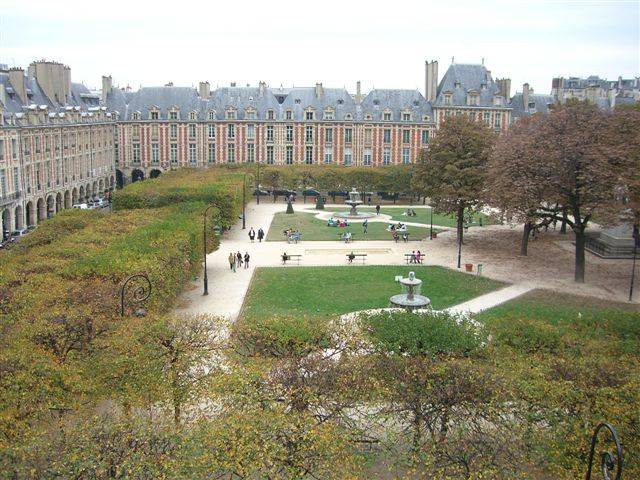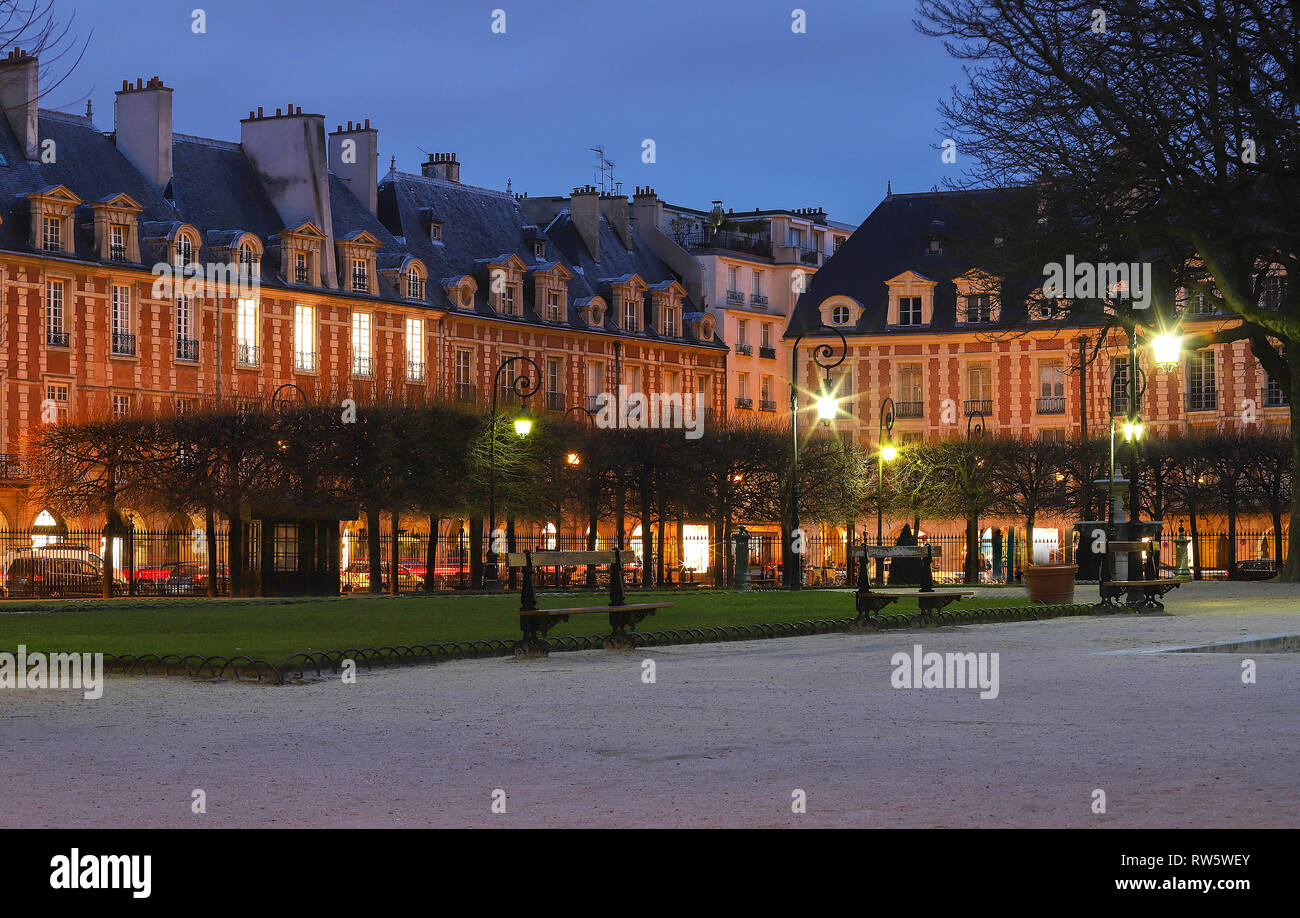A Complete Guide to Place des Vosges Paris France
A Complete Guide to Place des Vosges Paris France
Blog Article
A Comprehensive Guide to the Architectural Beauty of Location Des Vosges
Location Des Vosges, established in the very early 17th century, exemplifies the building sophistication of its time, offering a distinct glance into the unified style principles of the French Renaissance. As we discover the intricate components that specify this iconic square, one should think about the wider implications of its design on metropolitan architecture.
Historic Background of Area Des Vosges

The square was developed as part of a wider initiative to enhance the city landscape of Paris, incorporating perfects of balance and order (place des vosges architecture). Completed in 1612, the square featured consistent façades, which were adorned with red brick and stone, producing a harmonious visual that remains to influence metropolitan preparation today
Throughout the centuries, Area Des Vosges has served various duties, from an imperial house to a vibrant public space, adapting to the transforming political and social landscape of France. Its importance is further emphasized by its association with significant numbers, consisting of the renowned author Victor Hugo, that lived there. Today, it stands as a valued historical website, embodying the abundant story of Parisian building and cultural heritage.
Building Attributes and Design
Identified by its balanced layout and cohesive building style, Location Des Vosges showcases an exceptional blend of Renaissance and classic design elements. The square is mounted by 36 the same red-brick homes adorned with stone information, developing an unified visual experience - place des vosges paris map. Each frontage includes a series of arched windows and stylish dormer windows, adding to the general balance of the set
Making use of sharp arcs is a remarkable attribute, boosting the verticality of the structures which is normal of the French Renaissance. Ground-level arcades provide a sheltered walkway, welcoming site visitors to leisurely stroll while delighting in the architectural complexities. The roofing systems, identified by high inclines and slate ceramic tiles, better emphasize the uniformity while permitting efficient rainwater drainage.
Landscape design within the square likewise plays a vital duty in its style, with manicured gardens and courses that resemble the geometric precision of the architecture. The central fountain adds a centerpiece, matching the peace of the surrounding space. Collectively, these architectural features not just mirror the aesthetic appeals of very early 17th-century France but additionally underscore the sustaining legacy of Location Des Vosges as an excellent model of city planning and design.
Noteworthy Landmarks and Structures
Amidst the building grandeur of Place Des Vosges, several remarkable spots and structures attract attention, each contributing to the square's social and historic relevance. The most popular of these is the Hôtel de Sully, a splendid example of 17th-century design, which now houses the Centre des Monuments Nationaux. Its grand façade and intricately created yard mirror the opulence of its era.

The square is likewise flanked by a collection of similar brick and stone homes, defined by their harmonious percentages and stylish arcades. These frameworks not only supply a feeling of unity within the square however additionally serve as a window right into the building methods of the time.
Gardens and Green Spaces
Snuggled within the dynamic surroundings of Area Des Vosges, yards and eco-friendly areas provide a peaceful contrast to the square's architectural magnificence. This historical square, understood for its symmetrical style and rich history, is complemented by thoroughly maintained yards that invite both leisure and representation.

Benches purposefully positioned throughout the gardens urge site visitors to rest and absorb the serene setting. Seasonal flowers bloom in dynamic shades, adding a vibrant component to the scenery. In addition, the interplay of light and darkness cast by the bordering 17th-century structures creates an exciting environment, further improving the experience.
In this harmonious blend of nature and style, the gardens of Area Des Vosges are not merely an accessory to the square's appeal; they are an integral element of its beauty, inviting all to pause and appreciate the tranquil environment.
Visitor Information and Tips
Preparation a check out to Location Des Vosges needs thoughtful consideration to completely appreciate its building natural beauty and calm gardens. Located in the heart of the Marais area, this historic square is quickly accessible through mass transit, with the nearby city station being Bastille.
For an optimal experience, take into consideration seeing during weekdays to stay clear of the weekend groups. Morning or late mid-day gos to provide the finest light for photography, improving the elegance of the surrounding 17th-century style.
It is recommended to use comfy shoes, as the rock paths can be uneven. In addition, bringing a barbecue is a fascinating means to delight in the rich greenery; nonetheless, bear in mind preserving the tidiness of the area.
While exploring, take the time to appreciate the square's special art galleries and shops. Restrooms are limited, so plan appropriately.
Lastly, don't miss the opportunity to see the Maison de Victor Hugo, located at number 6, which uses insight right into the life of the famed writer who stayed there. With careful planning, your check out to Location Des Vosges will certainly be a memorable expedition of Parisian heritage and harmony.
Final Thought
In summary, Place Des Vosges exhibits the building splendour of very early 17th-century France, defined by its balanced layout and unified style. The square's abundant historic significance is matched by its notable spots, such as the Hôpital de Sully and Maison de Victor Hugo - place des vosges paris france. The manicured gardens and main fountain boost the square's aesthetic allure. As one of Paris's many distinguished sites, Place Des Vosges stays an important item of the city's cultural and architectural heritage.
Location Des Vosges, established in the early 17th century, exhibits the building class of its time, offering an one-of-a-kind glance into the harmonious style concepts of the French Renaissance.Characterized by its symmetrical layout and cohesive building style, Location Des Vosges showcases an exceptional mix of Renaissance and timeless layout components. Collectively, these building functions not just reflect the aesthetics of very early 17th-century France but also emphasize the withstanding tradition of Location Des Vosges as an exemplary version of metropolitan planning and design.
In the middle of the building natural beauty of Location Des Vosges, numerous noteworthy landmarks and buildings stand out, each contributing to the square's historical and cultural value.In summary, Location Des Vosges exemplifies the building splendour of very early 17th-century France, characterized by its in proportion layout and unified style.
Please visit one of our local supporters - Https://www.buymustangpartsnearme.com/collections/
Report this page